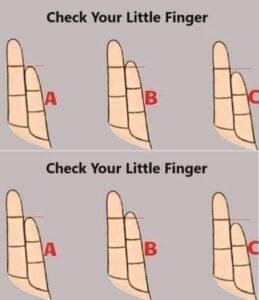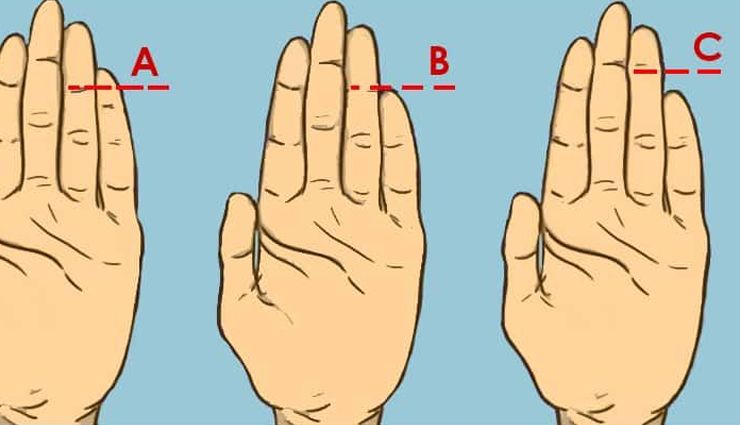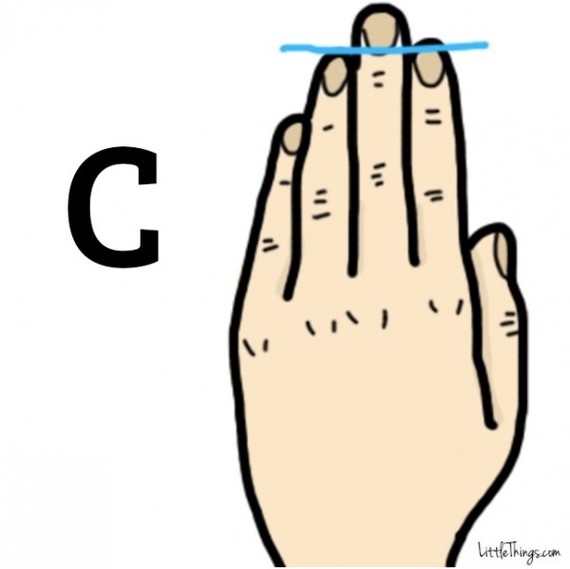
When we think about body language and self-expression, our hands often play a major role. While the index finger points, and the thumb signals approval, the pinky finger—or little finger—might seem like the least important digit. But recent trends in behavioral psychology and observational studies suggest this tiny finger could offer subtle clues about a person’s personality traits.
This article does not rely on mystical claims or unproven palmistry traditions. Instead, it looks at the pinky finger through the lens of body language, individual posture habits, and personal behavioral patterns that may correlate with certain temperaments.
Why the Pinky Deserves a Second Look
In biomechanics and psychology, how a person carries themselves physically can be a window into personality. Research into nonverbal cues and microexpressions has found that the way people move and use their hands—even unconsciously—may correspond with communication style, emotional openness, or individual temperament.
Source:
- American Psychological Association – Nonverbal Behavior Research
Let’s explore the four common pinky alignments people have and what they may reveal, based on observable physical posture patterns and communication tendencies.

Type A: The Balanced Pinky – Measured, Loyal, and Grounded
If your pinky finger aligns evenly with the top knuckle of your ring finger when your hand is relaxed, you likely exhibit traits of emotional balance and reliability.
Key Characteristics:
- Loyal and Trustworthy: You are dependable and maintain long-term relationships well. You’re seen as someone who can be counted on.
- Measured Honesty: You value truth and express it respectfully. Your communication style is thoughtful but candid.
- Emotionally Attuned: You’re sensitive to both your feelings and the emotions of those around you, often offering quiet support.
These traits reflect a calm and consistent communication style, commonly observed in individuals with symmetrical postural habits.

Type B: The Slightly Curved Pinky – Expressive, Social, and Empathetic
If your little finger naturally curves away from the ring finger when your hand is at rest, this could indicate a personality that thrives in social interaction and values emotional expression.
Key Characteristics:
- Expressive and Outgoing: You enjoy storytelling, conversation, and social connection.
- Empathetic Listener: You pick up on emotional cues easily and often respond with compassion.
- Creative Thinking: You are drawn to the arts, innovation, and outside-the-box ideas.
In psychology, individuals with expressive hand gestures and dynamic postures are often linked with higher emotional intelligence and extroverted tendencies.
Source:
- Psychology Today – Body Language and Personality

Type C: The Shorter Pinky – Reflective, Quiet, and Curious
If your pinky finger stops well below the top joint of your ring finger, you may fall into the category of a reflective, curious, and introspective personality.
Key Characteristics:
- Reserved but Insightful: You may not speak first in a conversation, but your input is thoughtful and well-considered.
- Introspective: You enjoy pondering life’s deeper questions and often seek personal meaning in everyday experiences.
- Creatively Curious: You appreciate the abstract and excel in problem-solving that requires imagination.
These individuals may display closed or self-comforting postures in social settings but often shine in one-on-one interactions or reflective environments.

Type D: The Independent Pinky – Driven, Confident, and Vision-Oriented
A pinky finger that stands slightly straighter and more independently from the rest of the hand may suggest a natural sense of autonomy and inner confidence.
Key Characteristics:
- Goal-Oriented: You set ambitious personal or professional targets and are not easily deterred.
- Self-Directed: You trust your instincts and make decisions independently.
- Confident Communicator: You express your ideas clearly and often take initiative in discussions.
This alignment is often observed in people with upright posture and proactive body language, frequently associated with leadership qualities.
What These Observations Don’t Mean
It’s important to note that while personality may influence body language and posture, there is no scientific evidence to suggest that the length or shape of a pinky finger causes specific behaviors or mental traits.
Rather, subtle patterns in how we carry our hands and fingers—much like our facial expressions or walking style—can reflect habitual personality tendencies developed over time.
Pinky Finger in Functional Anatomy
Functionally, the pinky plays a significant role in hand grip strength and fine motor control. According to orthopedic and ergonomic research, the pinky contributes up to 30–40% of total grip power, especially in movements requiring full-hand coordination.
Source:
- National Institute for Occupational Safety and Health (NIOSH)
So while it may be small, the little finger is essential for tasks ranging from typing and writing to playing instruments and handling tools.
Cultural and Symbolic Meanings
Beyond function, the pinky has played symbolic roles in various cultures:
- In Japan, the pinky can symbolize a romantic partner.
- In Western cultures, the “pinky swear” has long been a childhood oath of trust.
- In business etiquette, the pinky ring has historically indicated academic or professional achievement (especially in engineering fields in Canada and Europe).
These symbolic uses further demonstrate how the pinky has gained cultural meaning—beyond its size—across time and geography.

Final Thoughts: Small Finger, Big Insights?
Whether you find yourself with a balanced, curved, short, or straight pinky finger, the real takeaway is this: our hands reflect how we express ourselves, physically and emotionally. They are not predictors of fate, but they do offer windows into our daily habits and how we relate to others.
The next time you notice your hands at rest, take a moment to observe. Not just the pinky—but all your fingers—might quietly be telling a story about your comfort zone, confidence, or communication style.
And as modern psychology continues to explore the intersection of posture, personality, and nonverbal communication, these kinds of observations can serve as tools for self-awareness and social understanding.